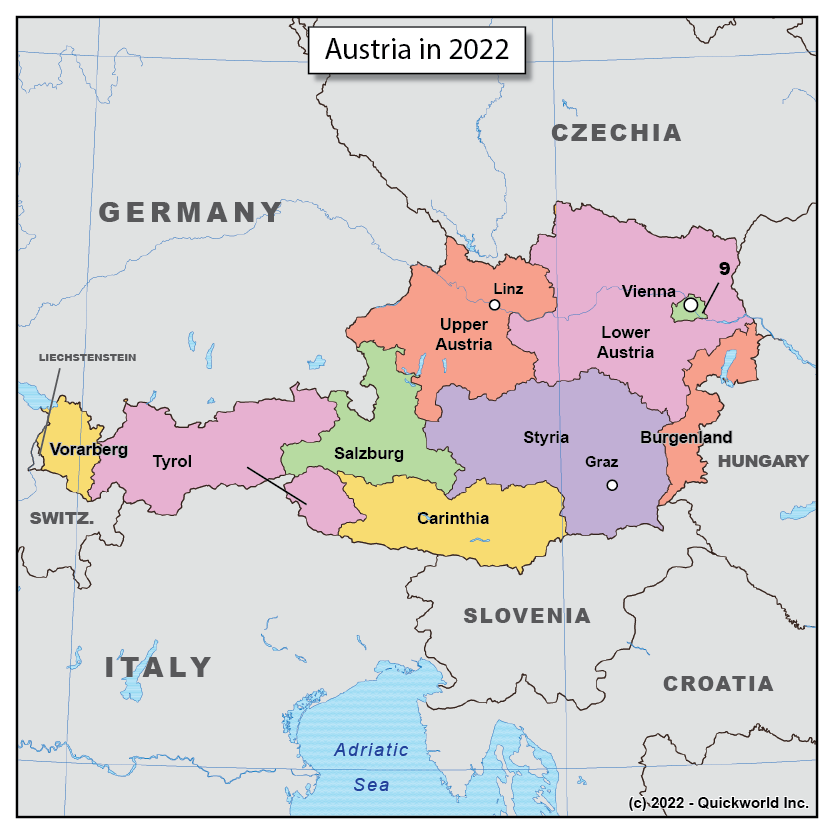Our Series on Federations takes us to Austria, one of the smallest Federal States in the World along with its neighbour Switzerland.
While Austria as an entity has been in existence for a long time. the modern State of Austria overlaps the historical land known as Austria only partially. The Duchy, later Arch-Duchy of Austria fell into the hands of the Habsburg family in the late 1200, who then proceeded to become emperors of the Holy Roman Empire and held considerable lands both in the Empire (Austria, Carniola, Tyrol, Bohemia-Moravia, Carinthia as well as many small principalities throughout Swabia and the rest of the Germanic lands) and outside (Hungary, Transylvania, Croatia, etc.). At the fall of the Holy Empire in 1806, all Austrian lands became the Empire of Austria, later renamed the Austro-Hungarian Empire. That Empire encompassed eleven nationalities, among which the Germans and Hungarians were the first among equals in their own lands.
The defeat in World War One split the old Austrian entity into many nations, and leaving the German populations, who had never had much common institutions, as a state by default. As union with Germany was categorically denied by the winners of the War, the Treaty of St Germain in 1919 created a new federation simply known as the Austrian Republic. Once again, the mention of German ethnicity of its people was not allowed in the name of the country, but Austria became the first annexed territory of the German Reich in 1938.
The defeat of the Nazis in 1945 led to Austria being again detached from Germany and occupied by the Winners of the War. An agreement between the four powers was found and the second Austrian Republic was born in 1955. As of 2022, its federal institutions remain as they were in 1955.
Austria in 2022


